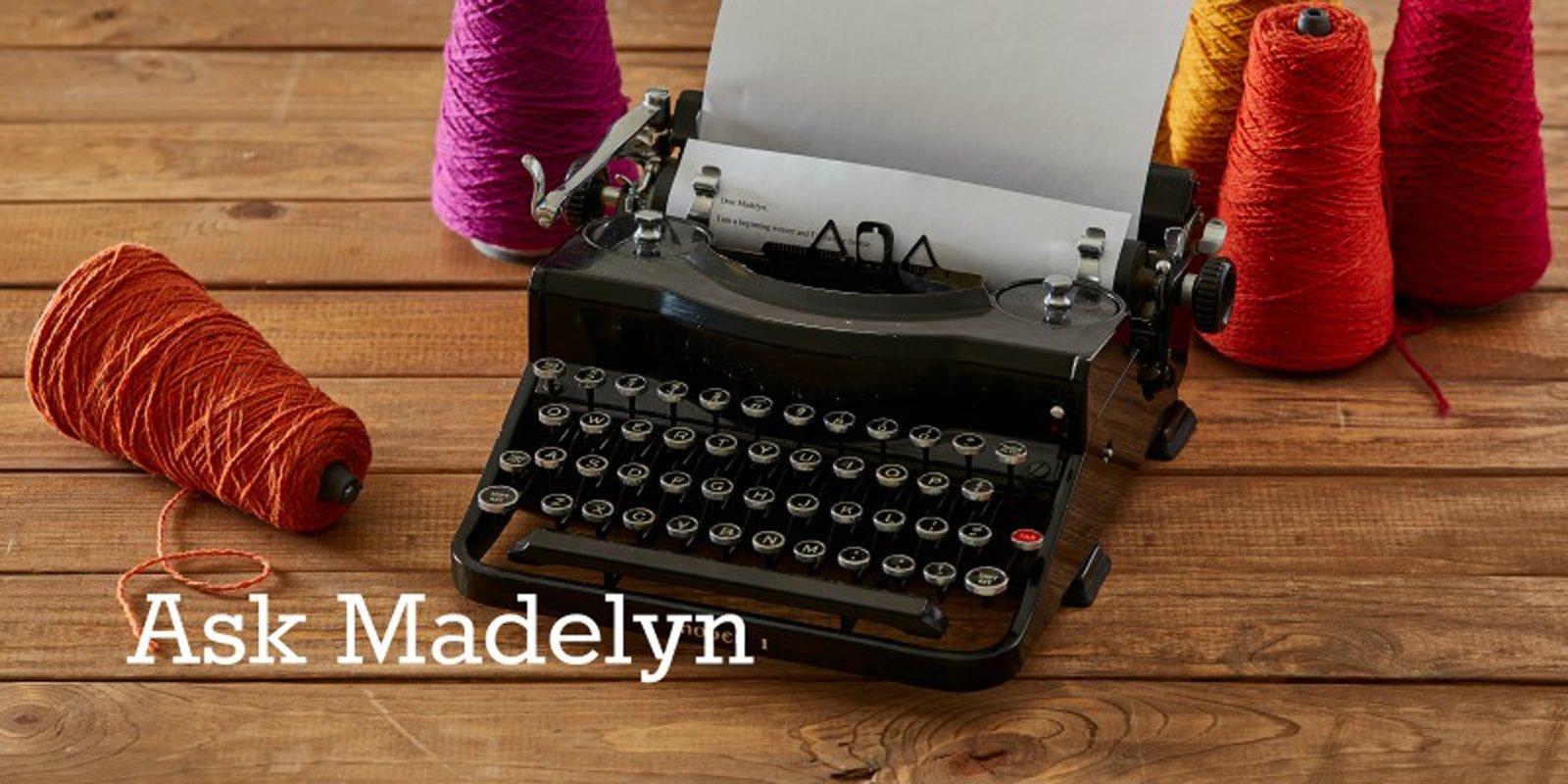Hi Madelyn,
Is there a “formula” for sett when the warp and the weft are different sizes? I’ve never found this situation addressed in any of my weaving books. I am wanting to use a 3/2 pearl cotton for warp and 10/2 pearl cotton for weft. Thanks! —Pegi
Hi Pegi!
The issues of sett seem to be a recurring concern for weavers. I thought it might be good to put all of the parameters to consider in one place. Sett choices depend on: fiber size, fiber content, selected weave structure, and desired finished hand.
The steps I’d go through to determine sett are: Determine the sett for the yarn you are using for a balanced plain weave (do this either by wrapping a ruler so that the threads line up but don’t squish each other and count the number in a half inch) or by consulting the Master Yarn Chart (the sett for a balanced plain weave will be the center number of three that are given, I.e., for 20, 24, 28, the sett for a balanced plain weave is 24 ends per inch.
Weave structure, fiber content, and desired finished hand are all intertwined. If your fiber is cotton, cottolin, or linen and you are choosing the sett for table linens and your structure is plain weave, use the sett determined by #1. If your fiber is silk and your weave structure is plain weave, you might need to sample (starting with the sett in #1) to determine the finished hand for your particular silk. If the fiber is wool and you are looking for a very soft interlacement (or you are wanting to full the fabric a lot), you’ll need to make the sett much more open (and sample to determine the finished hand). If your weave structure is twill, you’ll need to make the sett closer. The longer the floats, the closer the sett needs to be. For twills, I’d start with the righthand number of the three given in the Master Yarn Chart and then sample to see if the sett should be more or less open.
Sampling should include washing the fabric for a real assessment. I usually sample on the full threading of the piece itself, allowing extra warp length to do so. You can always change the sett for the full piece if you need to. (Winding a warp, threading the loom, and weaving a sample before winding the warp, threading the loom, and weaving the piece is just too much winding and threading for me. If I decide the whole idea was a mistake, I just figure out another idea for that warp and threading, which is sometimes better than the original idea anyway.)
In your case, the missing bit of information is the weave structure you intend to use. Usually, balanced plain weave, twills, and laces have a warp and weft yarn of the same or similar sizes. If you want to use 3/2 pearl cotton (three times thicker than 10/2 cotton) for the warp, you would need to sett it closer for a 10/2 weft than if you also used 3/2 as weft. If you are weaving plain weave or twill, I’d start with a sett of 16 or closer (14 is the sett for a balanced plain weave) and sample. With any structure you choose for these yarns that has one warp and one weft (plain weave, twill, or lace weaves), you will see much more warp than weft—an important consequence of using them.
—Madelyn

